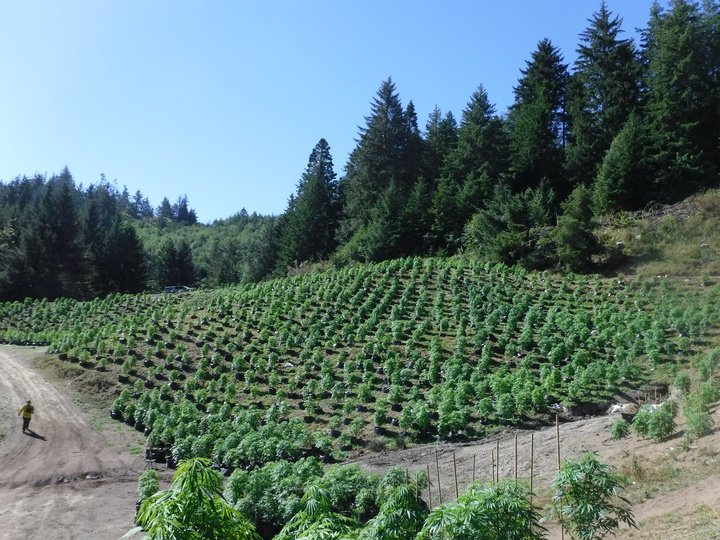
File photo: HCSO.
When I first started
working on northern California’s Klamath River 15 years ago, the
running joke was that there were two things worth talking about: kind
bud and spring chinook. Fast forward to today, and while weed and
fish still top the list of North Coast conversation starters, the
reality is that one is slowly killing the other.
Simply put, there is far too much weed cultivation in Humboldt County’s sensitive watersheds. Native fish habitat is getting hammered. The Eel River in particular experiences both summer water diversions completely drying up creeks and a massive labyrinth of private roads and illegal grading sites that spew deadly sediment into spawning and rearing habitat with every substantial rain event.
Generations ago, it was the Eel River dams and old growth logging boom that brought local salmon and steelhead runs to the brink of extinction. Today, it is largely an unchecked weed industry that is pushing them over the edge. I know it, you probably know it, and our local governing bodies definitely know it. The problem is that few are willing to do anything about it. The black market weed industry has been the engine of the North Coast economy for so long that turning a blind eye to its negative impacts is deeply ingrained in the culture – even, or perhaps, especially, in local government.
Nowhere is this more apparent than in Humboldt County’s attempts to develop a regulatory framework for the newly legalized industry. California law says it is the County’s responsibility to regulate local land use to protect public trust resources like clean water and healthy fisheries. But our current Board of Supervisors and Planning Commission have not shown the courage to face the facts now on the table: our existing weed industry is far too large and has far too many impacts on our watersheds and fisheries. It is environmentally unsustainable.
It is also economically unsustainable. The price of weed is in freefall. It will never return to the sky-high prices of prohibition. And yet, Humboldt County alone is already on track to produce more legal weed than the entire California market can absorb this year. It’s the final days of the green rush, and the scramble for the scraps has the potential to get truly ugly.
Like so many rural areas built around the extraction of natural resources, Humboldt has suffered the ravages of boom and bust economies over and over. We have yet to learn that real land use planning and regulation — saying no to bad ideas — is the foundation of a more diversified and sustainable economy that can support healthy communities and fisheries for the long haul.
To wit, the Humboldt County Board of Supervisors is poised to rubber stamp a plan to issue thousands of new cultivation permits at a special hearing on March 19th, despite knowing full well that neither our local watersheds nor the state market can support that much bud. In fact, the County has been downright unwilling to conduct the necessary analysis and develop a corresponding plan to protect our streams and the people who depend on healthy fisheries.
Friends of the Eel River strongly recommends that the County develop a scientifically defensible plan for evaluating the cultivation capacity of individual watersheds and permitting operations accordingly. It also must develop a real plan for enforcing its ordinance and shutting down non-compliant operations that are harming our watersheds. Doing so could mean that Salmon Creek will have salmon in it again. And it could right-size an industry that has metastasized beyond what our region can bear.
To build a better socio-economic future for Humboldt County, we must learn from past mistakes. If we can’t get real about the facts, we all will suffer from such short-sightedness.Tragically, a dollar in the pocket now still speaks far more loudly than a fish in the pot every week for the rest of our lives.
###
Stephanie Tidwell is the Executive Director of Friends of the Eel River. She holds master’s degrees in Communications and Environmental Policy from the University of Colorado.
CLICK TO MANAGE